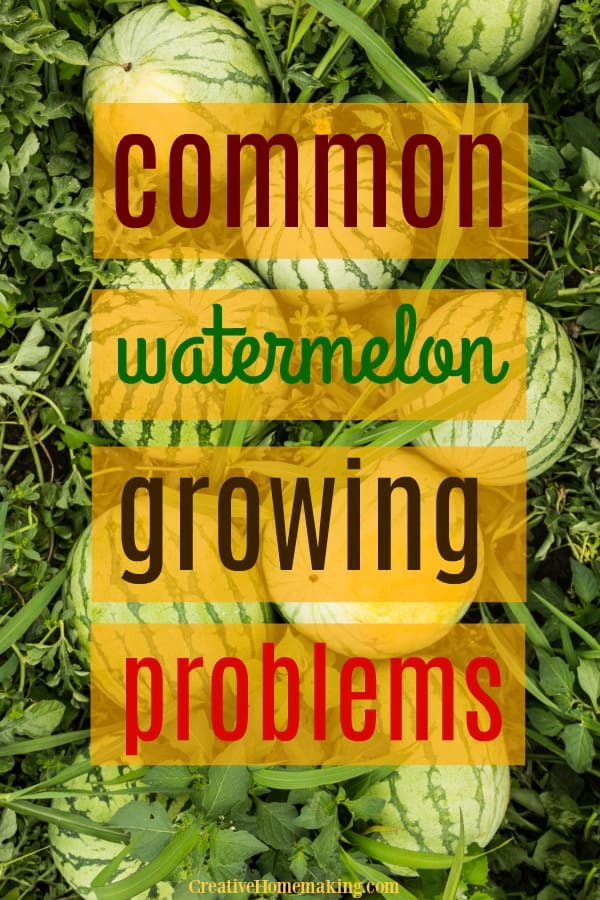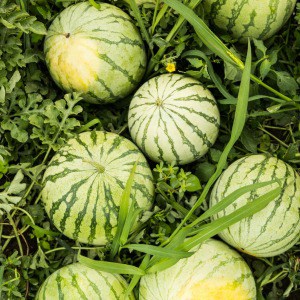The Watermelon is catalogued to be both a fruit and also a plant from a vine-like herb which originates from Southern Africa. Most watermelons have a green surface with a pink juicy flesh which can at times be red, orange, yellow depending on the type of watermelon or even green if it is not yet fully grown.
This post may contain affiliate links.
The fruit is considered to be very tasty, refreshing and can be eaten at any hour of the day because it is not heavy on the stomach and it has a nice refreshing flavor. Watermelon produces Vitamin C, as well as beta carotene and lycopene.
Instead of always having to pay for watermelon at the food store, you can plant your own watermelon. Despite the fact that it might be more difficult but the returns for cultivating a successful produce is even greater.

Required Tools
Spade
Fork
Required Materials
Water
Watermelon seeds
Compost
Fertilizer
Bone meal
Fertile sand
Growing Instructions
1. First find an area that gets a lot of sunshine. The area should provide proper air flow and also be guarded from chilly winds for windy seasons such as during the spring and fall.
2. The area should be arranged by excavating up the area using the garden gears like the spade and fork. Then insert lots of organic matter such as well drained manure and fertile sand within the earth in order to provide the right condition that the watermelon seeds need to flourish properly.
3. Watermelon seeds can be purchased from a nursery or a farm house. The seeds should be planted after both air and soil temperatures have reached to about 65 degrees around two to three weeks after the last frost if you live in a cold atmosphere.
The seeds can be planted directly into the soil which is better for growing melons during a time when the fruit has adequate time to fully develop. Watermelons don’t grow very well after being transplanted from a pot so it is not advised.
4. Dig a hole in the earth about one foot deep and about two feet in diameter and a around a shovel full of compost and a trowel or two of bone meal. Make every hole so that they have lots of space separating each other. They should be someplace from three feet for small bush kinds to 12 feet apart for giant ramblers.
5. During the growth periods, add thick amounts of organic mulch to keep in the right amount of moisture and deter weeds and keep the melons fresh while they grow. You can also use a black plastic mulch that have slits cut for the plants, and this will hold in the heat better than any other soil covering.
You can also cover the plants with floating covers to keep the air humid and give the young plants an inch of water a week.
6. When the flower begin to appear, then remove all the covers so that oxygen can circulate and pollination can take place for the bees and other pests. Compost should also be used every three weeks to commence the fertilization.
7. The melon fruit must be left for around 35 days after being sown so that they can full bloom, and then they can picked.
Tips and Warnings
* If you are very particular about the acidity of the soil where the watermelons will be planted, you can test it using an acidity test kit. Watermelons thrive best in soil that has near neutral PH but can also survive in acidity going up to 5.5.
* Plant only one variety of watermelon if you need to keep some of the seeds for the following annum, all watermelons cross-pollinate freely.
* Individuals who plant watermelon crops must rotate their crops each year with plant disease resistance varieties to discourage insects such as cucumber beetles that transfer the disease.
You can also plant radishes within your melon patch to ward off these elements. Watermelons are especially vulnerable to fusarium which are mainly found within northern areas.
Please visit these links for more information on: How to Grow Watermelons and How to Plant Watermelons.
Related Articles
- Watermelon Jelly Recipe
- Watermelon Rind Preserves
- How to Grow Salad in a Container
- How to Grow Passionfruit
Follow my gardening for beginners board on Pinterest.


